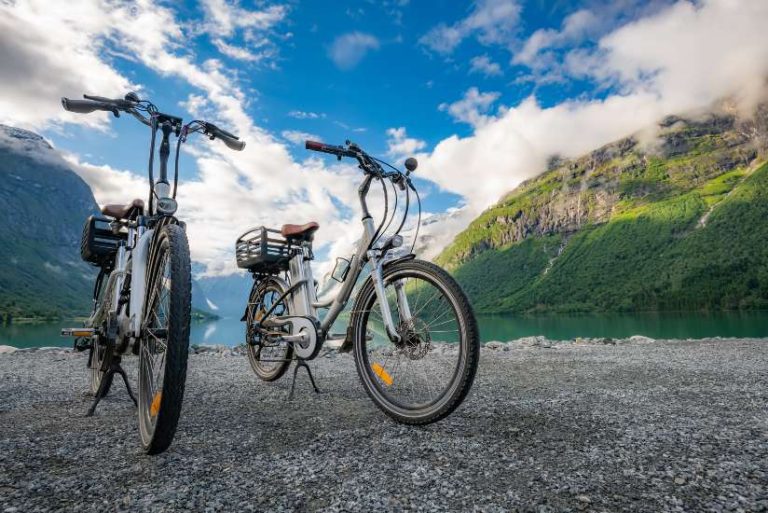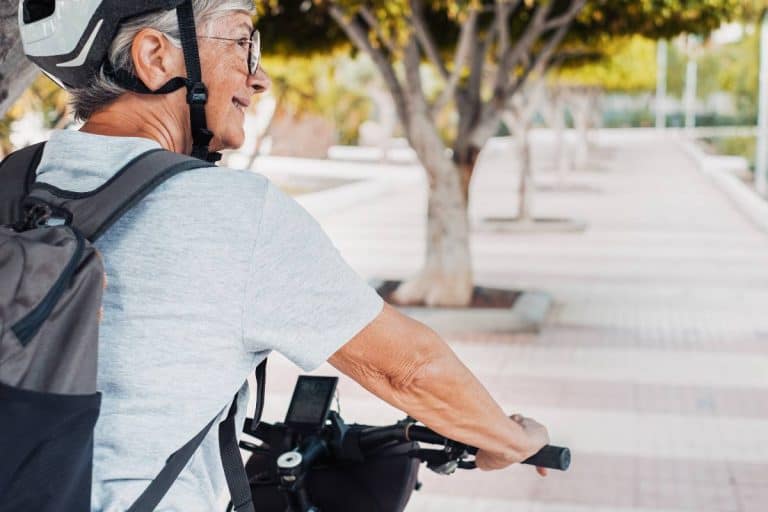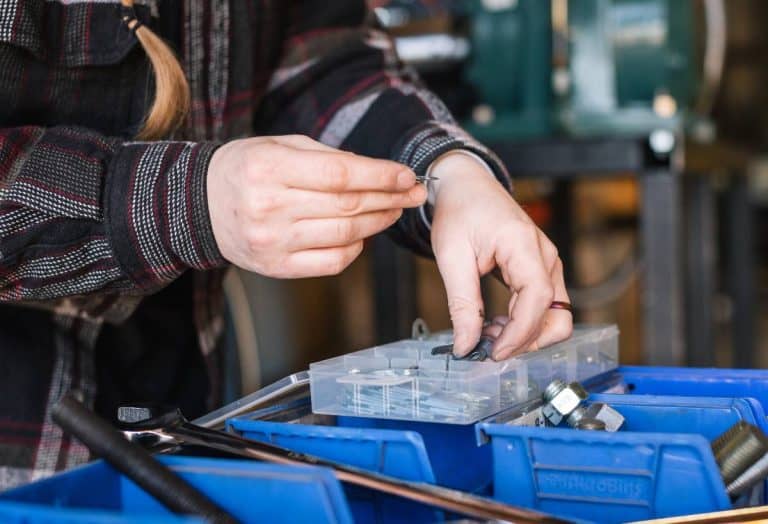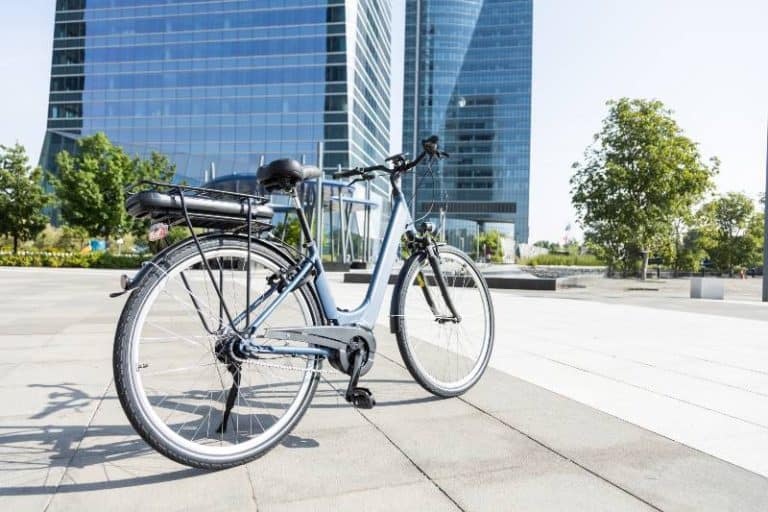What’s the Best Time to Buy an Ebike? Unraveling the Mystery
Considering purchasing an e-bike, but aren’t sure when the best time to buy is? You’re not alone! Many people are looking for ways to save money on their new ride while also ensuring they get a quality product. This blog post will give you the tools you need to determine when is the best time for you to purchase your e-bike and where you can find great deals. We’ll cover research tips, seasonal specials, and more – giving you all of the information necessary to make an informed decision about your next bike purchase. So read on, and let’s figure out when it’s optimal for YOU to take home that brand-new set of wheels!
The sales of electric bikes and riding electric bikes see a surge during spring and summer since the weather is warmer, making riding more pleasant. However, purchasing an electric bike depends on individual circumstances.
Key Takeaways
- The e-bike market, much like the traditional bicycle local market conditions, has a clear seasonality. Sales typically peak during the warmer months and decline in the colder months. Therefore, understanding this sales cycle can help you find better deals, particularly during off-peak seasons and during special sales events like Black Friday, end-of-financial-year sales, and other holiday discounts.
- Keep track of the prices of the e-bike models you’re interested in, subscribe to retailers’ newsletters and social media channels for news on sales and discounts, and don’t be afraid to negotiate the price.
- While timing can influence the price, it’s not the only factor to consider. Waiting for the ‘right time’ to buy could result in reasonable price increases, sold-out models, or missing out on the benefits of immediate use. It’s important to balance the potential cost savings from waiting for a sale with the value and convenience of owning the e-bike now.

Understanding the Ebike Market
The e-bike market, which includes electric bicycles, is a thriving and rapidly expanding sector within the broader bicycle industry. The growth of this market has been largely fuelled by global interest in sustainable and healthy modes of transport, alongside advancements in battery technology and electric hub motor efficiency. E-bikes are bicycles equipped with an electric motor that can be used to assist propulsion. They’ve become increasingly popular due to their ability to make cycling more accessible to people who might find traditional cycling challenging due to physical fitness, age, or hilly terrain.
The genesis of the e-bike market can be traced back to the late 19th and early 20th centuries when inventors started experimenting with adding motors to bicycles. However, it wasn’t until the late 1990s and early 2000s, with the advent of lighter and more efficient lithium-ion batteries, that the modern e-bike market started to take shape.
Today, e-bikes are widely adopted in several countries, notably China, which leads the world in e-bike usage. In other regions, such as Europe and North America, the e-bike market has been growing robustly, driven by changing transportation habits, increasing urban congestion, and a growing awareness of the environmental benefits of e-bikes.
The global e-bike market is diverse and fragmented, encompassing several major players such as Giant Bicycles, Trek Bicycle Corporation, and Accell Group, as well as numerous startups and specialty e-bike companies. These manufacturers offer a wide range of e-bike models, from pedelecs (pedal-assisted bikes) and throttle-on-demand bikes to speed pedelecs, which can reach faster speeds.
Now, let’s delve into the aspect of seasonality within the e-bike market. Much like traditional bicycles, the e-bike market experiences seasonality, with sales typically peaking in the warmer months and declining in the colder months. This pattern reflects the simple fact that people generally prefer to cycle when the weather is pleasant, and are less likely to do so when it’s cold, rainy, or snowy.
To illustrate, let’s say it’s April in Boston, Massachusetts. As the snow melts and the temperatures start to rise, more people are thinking about outdoor activities, including cycling. This leads to an increased demand for bicycles, including e-bikes, driving a seasonal peak in sales. By contrast, in November, when the weather is turning colder and the days are getting shorter, fewer people are thinking about buying new bicycles, leading to a seasonal dip in sales.
However, this seasonality can vary based on geographic and climatic factors. For instance, in places with milder winters or in urban areas where e-bikes are used for commuting, sales might not drop as drastically during the colder months. Similarly, in countries where cycling infrastructure is robust and cycling is deeply ingrained in the culture, like in the Netherlands or Denmark, e-bike sales might be less susceptible to seasonal fluctuations.
When is the Best Time to Buy an Ebike
Deciding on the best time to buy an e-bike can be influenced by several factors, including market price, availability, and personal needs. There are specific times throughout the year when you may find better deals or more options to choose from.
Let’s discuss this in detail.
From a seasonal perspective, the best time to purchase an e-bike is usually in the late fall to winter months. The reason for this is linked to the aforementioned seasonality of the e-bike market. Demand for e-bikes, like regular bikes, tends to decrease as the weather becomes colder, especially in regions that experience severe winters.
As such, many retailers and manufacturers may offer discounts on their e-bikes during this time to clear out their current inventory and make room for new models. This is the same principle that applies to many seasonal items, like buying a winter coat in the spring or a swimsuit in the fall; when demand is lower, prices can drop.
However, there’s a potential downside to buying an e-bike in the off-season. While you may get a good deal, the range of available models could be more limited as stocks start to run low. Therefore, if you’re looking for a specific e-bike model, color, or feature set, you might have a wider range of choices during the peak season (spring and summer) when new models are typically released and inventory is plentiful.
Now, in terms of specific times of the year, holiday sales events can be a great opportunity to find discounts on e-bikes. For example, Black Friday (the day after Thanksgiving in the United States) and Cyber Monday (the Monday following Thanksgiving) are widely recognized for steep discounts on a broad range of items, and e-bikes are no exception.
Similarly, end-of-year sales around Christmas and New Year’s can also offer good deals as retailers clear out inventory for the new year. Keep an eye out for any holiday sales in your region, as these can often provide opportunities for savings.
Another time to consider is the end of the financial year, which can vary from country to country. In many places, the financial year ends in June or July, and companies might offer sales to clear out inventory and boost their annual sales figures. It’s always a good idea to sign up for newsletters from e-bike manufacturers or local retailers, as they will often notify subscribers of upcoming sales events.
However, it’s crucial to remember that finding the best deal shouldn’t be your only consideration when buying an e-bike. Quality, suitability for your needs, warranty, and after-sales service are all important factors. So while you might snag a great deal on Black Friday or in the winter, ensure that the e-bike you’re buying is the right fit for you, and not just your wallet.
Factors Influencing the Best Time to Buy
Here are some of the key factors that can influence the best time to buy an e-bike:
- New Model Releases: Much like cars, new e-bike models typically get released at specific times of the year. This often occurs during the spring months, just in time for the peak riding season. Consequently, older models might be discounted to clear inventory. Keeping an eye on when new models are due to be released can help you time your purchase.
- Retailer Sales Cycles: Understanding the sales cycles of your preferred e-bike retailers can help you identify potential savings. This can involve regular seasonal sales (e.g., spring or fall sales), holiday sales (such as Black Friday or Christmas), or end-of-financial-year sales. Regularly checking retailer websites or subscribing to their newsletters can keep you informed about upcoming sales.
- Availability of Financing Options: The availability of financing options, such as zero-interest or low-interest loans, can also influence the best time to buy an e-bike. Some retailers or manufacturers might offer promotional financing deals at certain times of the year, making e-bike purchases more affordable. It’s important to carefully read the terms and conditions of these financing options to ensure they suit your financial situation.
Always remember that timing your e-bike purchase to coincide with optimal cost-saving factors is not the only criteria to consider. The quality, fit, and overall value of the e-bike are also essential. While finding a great deal is exciting, it only matters if it meets your specific needs and expectations.
Tips on Getting the Best Deal
Finding the best deal on an e-bike requires a combination of diligent research, understanding market dynamics, and knowing your requirements. It is considered an effective means of transportation because it helps cyclists to reach destinations with little or no delay Here are some strategies and tips to ensure you get the most bang for your buck:
- Research Extensively: if you plan to buy an electric bike, Start by doing thorough research on the type of e-bike you want. (they are like a traditional bike, but better and easier to use!) Consider factors like motor power, battery life, frame style, fat tires, looking for same manufacturing brand, and intended use (e.g., commuting, mountain biking, casual riding, fat tire electric bike). Read reviews, compare specifications, and try out different models if possible. Having a clear idea of what you want will make it easier to spot a good deal when it arises.
- Price Tracking: Once you’ve narrowed down your selection, keep track of the prices for these models. Websites like Camelcamelcamel for Amazon, or Honey, which works with various online retailers, can help you monitor price fluctuations. Setting price alerts on these platforms will notify you when the price drops to your desired level. Remember, prices can fluctuate throughout the year due to seasonality, sales events, and new model releases.
- Subscribe to Newsletters and Social Media: Many manufacturers and retailers have newsletters or social media accounts where they announce upcoming sales, discounts, or special offers. These can provide valuable leads on when and where you can find the best deals.
- Negotiate: Don’t be afraid to negotiate the price, especially when buying from a physical store. While this may not be possible in all cases, some retailers may be willing to offer a discount, throw in some extra accessories, or offer free servicing for a period of time. It never hurts to ask!
- Consider Pre-Owned Options: Buying a used e-bike can be a great way to save money. Just make sure to do a thorough check of the bike’s condition and its history. Ask for maintenance records, check the battery life, and take it for a test ride if possible. Websites like Craigslist, eBay, or local classifieds can be good sources for used e-bikes.
In terms of where to buy, both physical stores and online retailers have their own pros and cons:
- Physical Stores: Buying from a physical store allows you to try out different e-bikes, ask questions, and get advice from knowledgeable staff. They may also offer maintenance and servicing, which can be a big plus. Local independent bike shops, large sports retailers, or specialized e-bike stores are all good places to look.
- Online Retailers: Online retailers often have a broader range of models and may offer more competitive prices due to lower overheads. They can also be a good option if you live in an area without many physical stores. Websites like Amazon, eBay, or direct-from-manufacturer websites are common places to buy e-bikes online. Just be sure to check the return policy and warranty terms before making a purchase.
Bear in mind, obtaining the ideal e-bike is not just a matter of locating the cheapest price, but rather discovering one that meets your requirements, delivers exceptional performance, and is value for money in the long run. Therefore, take your time, conduct thorough research, and revel in the process of purchasing your e-bike!
Risks of Waiting for the ‘Right Time‘
While waiting for the ‘right time’ can often lead to substantial savings, there are also risks associated with this strategy. Here are a couple of potential downsides to consider:
- Possible Price Increases: Prices are influenced by a number of factors, some of which can lead to increases rather than decreases. For instance, changes in supply chain costs, such as increased costs for raw materials or shipping, can lead to price hikes. This is something we’ve seen in recent years due to disruptions caused by events like the COVID-19 pandemic or global trade tensions. Currency fluctuations can also affect prices, especially for imported goods. Moreover, manufacturers may decide to raise prices with the introduction of new models, especially if they feature significant upgrades or innovations.
- Risk of Models Selling Out: Waiting for a price drop can sometimes mean missing out on the e-bike you want. Popular models or those with a high demand can sell out, and there’s no guarantee they’ll be restocked, particularly if the manufacturer is planning to release new models. This is especially true for end-of-season sales when retailers are clearing out stock to make room for new models. If you wait too long, the specific model, color, or size you want might no longer be available.
- Changing Technology and Features: The technology and features in e-bikes are constantly improving and evolving. As new models are released, older models may become obsolete or lack features that become standard on newer models. So, waiting too long might mean missing out on useful new features or improvements.
- Lost Opportunity to Use: Finally, waiting for the ‘right time’ means you won’t be able to use the e-bike in the meantime. If you plan to use the e-bike for commuting, for example, waiting to make the purchase means more time spent on other, potentially less desirable forms of transport. The cost savings from waiting for a sale should be weighed against the benefits and convenience you’d get from having the e-bike available to use immediately.
Timing your e-bike purchase strategically can save you money, but it’s important to consider the potential risks involved. With each person having unique requirements, the ‘right time’ to buy will vary. Ultimately, striking a balance between price, availability, and personal needs is what matters.
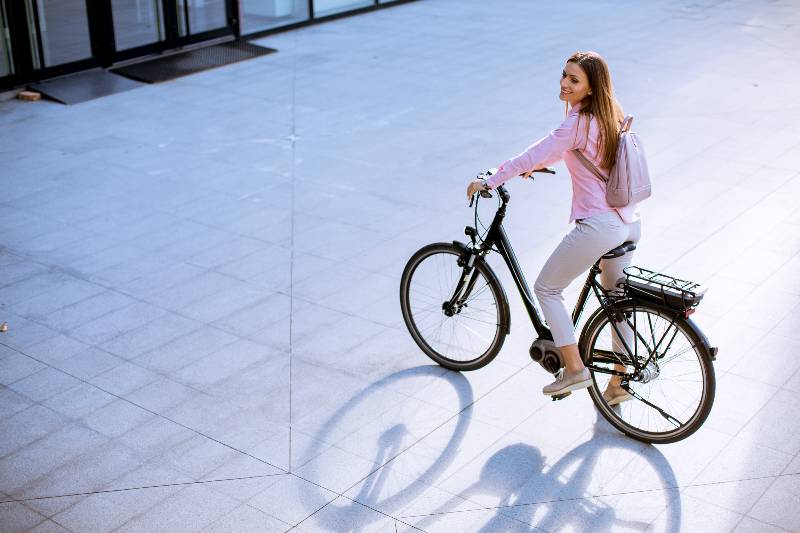
What’s the Best Time to Buy an Ebike? FAQs
What are some effective strategies to get the best deal on an e-bike?
The best strategies for getting the best deal on an e-bike include researching models and prices, same price range tracking, subscribing to newsletters and social media accounts for discounts or special offers, negotiating with stores, and considering pre-owned options.
Are there specific retailers that offer better deals on e-bikes?
Different retailers may offer different deals on e-bikes. It’s a good idea to research and compare prices at both physical stores and online retailers, such as Amazon, eBay, or the manufacturer’s website. Also, don’t forget to check local classifieds for used e-bikes!
How do financing options affect when to buy an e-bike?
Financing options can affect when to buy an e-bike because they may offer lower interest rates or longer repayment periods at certain times of the year. It’s a good idea to research and compare financing deals before making a purchase.
Is it risky to wait for a certain time of year to buy an e-bike?
Waiting for a certain time of year to buy an e-bike can save money, but it also brings risks. These include the possibility of price increases, missing out on a specific model or size due to stock shortages, losing out on improved technology and features in newer models, and losing the opportunity to use the bike immediately.
Do e-bike prices increase over time due to high demand?
Yes, e-bike prices can increase due to high demand. Factors such as changes in supply chain costs, currency fluctuations, or the introduction of new models with improved features can lead to price hikes. It’s important to consider these potential risks when deciding whether or not to wait for a sale.
Conclusion
To make sure you’re getting the best deals on an e-bike, it’s important to consider when you decide to purchase one. Although peak times for buying an e-bike occur during the warmer months, remember that there are other sales found at off-peak times and events like Black Friday, end-of-financial-year sales, and holiday discounts.
Doing your research in advance and signing up for newsletters from electric bike vendors could set you up for savings. Signing up for Electrik Living’s newsletter will give you access to exclusive offers and help keep you updated about sales on a hot new electric bike! With the right strategy, shopping for an e-bike doesn’t have to be a daunting task—just find what works best for you at the price point that works best for your wallet. Happy hunting!

